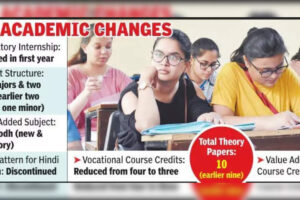
AI-Powered, Visual and Auditory-Based Video, and a Focus on the Learning Moment — Campus Technology
Stephen Laster at Panopto: AI-Powered, Visual and Auditory-Based Video, and a Focus on the Learning Moment
A Q&A with Stephen Laster
At Campus Technology, we’ve followed Stephen Laster’s career through more than two decades of senior leadership roles, “driving impact,” as he says, at organizations leading some of the most significant directions and change in the technology and education markets. His work has included positions at McGraw-Hill Education, Ellucian, Harvard Business School, and Babson College. Most recently, he was president of D2L. Here, we ask Laster for an update since taking the helm as CEO at Panopto this past May, 2025.

Mary Grush: For 20-plus years, you’ve worked in a diverse range of technology markets. About four months ago, you chose to move to Panopto. What makes Panopto a good fit for your career now?
Stephen Laster: That’s a great question. I always look at the opportunities and organizations I join through the lens of, “How can I bring what I do well to drive impact?“ And I’ve done that for my entire career.
Panopto resonates deeply, Mary, as we’ve shared in prior conversations about dyslexia. I personally learn differently, just as a lot of the world learns differently. I am very much a visual and auditory-based learner. I actually have a near-perfect visual memory, so I can see things from many, many years ago, but as a proud dyslexic, I don’t really learn that well from books.
The opportunity to join Panopto has come at a time when the world needs better access to education — now more than ever. I believe that Panopto allows institutions to reach learners with all kinds of learning styles and different ways of thinking, particularly visually and auditorily. I think that’s very important right now, and I’m happy that I can help make an impact on that front.
Grush: Video has been around for quite a while in education, of course, but is it becoming even more important to education? How is that reflected in Panopto’s mission?
Laster: To answer that I’d like to bring the conversation back to visual and auditory learners. Video has long been and continues to be very important, but let’s just break it down for a minute. Panopto was born to solve a really important problem: How do we capture, through video and through audio, what’s happened in the classroom? And then, how do we make use of that — to extend the classroom, or for remediation, or to create subsequent content to engage other learners who weren’t present? That mission remains incredibly important.
Further, the advent of AI has made doing all of that much more scalable. It’s allowed us to do things like better summarization, or better transcription at a lower cost, while breaking down barriers of language, culture, and learning style.
And now, we have the advent of Elai, which I’m very excited about. We’ve recognized that not everything happens in lecture anymore. There are some amazing ideas in learning institutions that are captured statically — in pictures, text, or PowerPoints. Through Elai, we’re able to unlock static content and turn it into avatar-driven video with feedback, and strikingly, with engagement.
Through Elai, we’re able to unlock static content and turn it into avatar-driven video with feedback, and strikingly, with engagement.
Again, the problem Panopto was created to solve is how to extend the classroom in ways that leverage visual and auditory-based learning. Is that still important today? It’s absolutely critical now, as, for example, it becomes more difficult for students to get to physical classrooms for various reasons, or as AI and other forces disrupt what it means to maintain a set of skills, causing people to go back for re-education. The ability to learn things through video, through visual and auditory-based learning, allows many, many more people to acquire the skills they need to be successful. I think that’s pretty cool.
Source link



